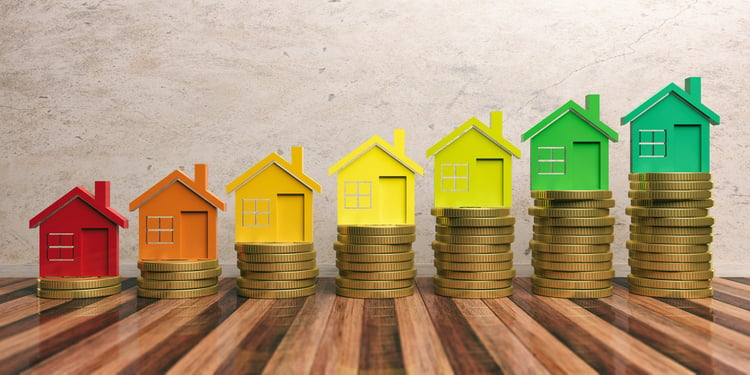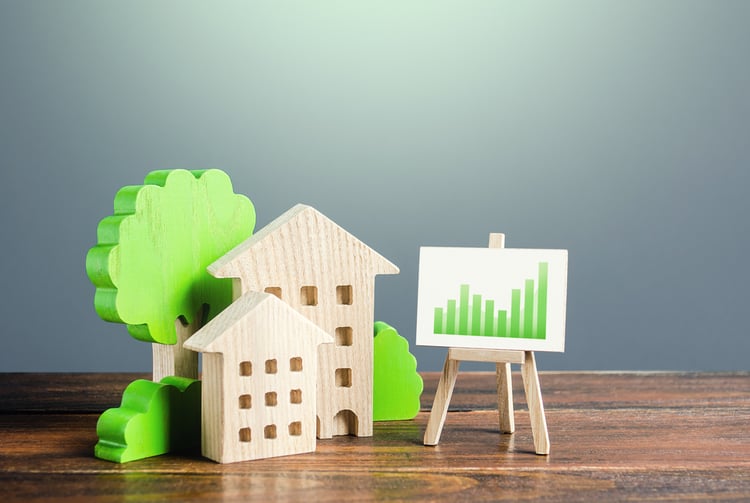Modern building technologies are creating many opportunities to improve energy efficiency. Passive home construction is one of the most popular methods in the green building movement and reduces operating costs while improving the indoor environment. Despite its name, the passive house method is not exclusive to residential buildings, and its design principles can also be applied to commercial projects.
One of the main benefits of passive house design is the ability to heat and cool buildings at a very low cost without affecting comfort. When a building is designed with these principles, it consumes 75-95% less energy than a traditional building. In this article we will discuss the passive house method, analyzing its benefits and technical challenges.
Learn more about our Passive House projects
View projects
Passive house design began in Germany in 1988 and its original name was Passivhaus. The concept has expanded to many countries and climate zones, and there are now more than 60,000 passive house projects around the world.
Passive house construction and green construction

Passive houses are considered green buildings, due to the energy savings achieved during their life cycle. With traditional construction methods, buildings are heavily dependent on HVAC systems, which account for more than 50% of their energy consumption. The main design principle of a passive house is to achieve indoor comfort with the lowest possible energy consumption. There are many ways to do this and below are some examples:
- Thermal mass can be used to capture sunlight during the day, and “free heating” is achieved when materials release their thermal energy at night.
- Interior temperatures are more easily maintained when the building has a high level of insulation and an airtight environment – walls, floor, roof, etc.
- Energy-efficient windows and smart ventilation can also make buildings less dependent on conventional heating and cooling systems.
When combined, these design features can regulate the indoor environment, maintaining a suitable temperature with minimal HVAC use. Passive house principles can be applied to both new construction and major renovations, in buildings of any type and size. In renovation projects, it may even be possible to recycle materials as a way to reduce construction costs.
Because passive house design requirements are so demanding, a design that meets them will generally meet energy efficiency codes. Differences between climate zones can be expected, but the level of passive house performance typically far exceeds codes. The reduced energy needs of a passive house project can be easily met with on-site renewable energy, achieving net-zero operation.
Advantages of passive house construction

Imagine living in a building without cold drafts and with a constant temperature in every room, all year round. Passive house construction results in healthier indoor environments with minimal heating and cooling bills.
- Green technologies developed in recent years can be used to drastically reduce energy costs in homes.
- There is now a wide range of insulation materials available and mechanical systems are constantly improving.
Many older buildings are poorly insulated and their heating and cooling systems are much lower in efficiency than currently available HVAC technologies. By applying passive house concepts in the modernization of these buildings, energy savings of over 75% are viable.
Energy recovery ventilation is used to achieve maximum efficiency in passive house designs. Heat and moisture are exchanged between supply and exhaust air, reducing cooling costs in summer and heating costs in winter. When combined with smart ventilation controls, an ERV system can maintain comfortable indoor temperatures with minimal energy cost:
- The ventilation rate decreases when occupancy is low, saving fan energy.
- During the summer, exhaust air removes heat from the fresh intake air.
- During winter, on the other hand, the exhaust air provides heat to the intake air.
The advantages of a passive house include improved air quality and uniform indoor temperatures. There are long-term savings thanks to energy efficiency and mechanical systems are more compact because their design capacity is smaller.
Despite the high level of performance required in passive house construction, the method allows for design flexibility to suit the homeowner's preferences. For example, if a homeowner prefers a large window area, they can have triple-pane coated glass and the surrounding walls can have extra insulation. However, working with an experienced contractor is recommended to avoid design decisions that negatively impact energy performance.
Main challenges of building passive houses

Lack of customer knowledge is a major obstacle to the green building movement in general, and this applies to passive house construction . Many projects are designed to reduce construction costs, even when this leads to much higher energy bills over time.
The initial costs of a passive house project are, on average, 10-30% higher than traditional construction. Additionally, passive house construction can be challenging in locations with very cold winters or hot summers.
- Backing up heating and cooling systems becomes necessary and builders may require plenty of insulation to stay under the 15 kWh/m2/year limit.
- The required energy performance may also limit the area of the windows, and those used must have triple glazing and a low-emissivity coating.
The decision to build a passive house project can be approached from a financial point of view. Energy savings of over 90% are possible, but complying with the Passivhaus standard can be very costly in places with extreme temperatures. Homeowners must weigh utility savings against construction costs and decide whether the return on investment is attractive.
Working with an experienced contractor is very important on a passive house project. Thermal bridging is a common problem affecting buildings and occurs when layers of insulation are displaced, creating a place with high heat loss. This can have a big impact on the energy efficiency of Passivhaus projects.
Conclusion
Passive house construction can greatly reduce heating and cooling costs in buildings, and the concept is not limited to the residential sector. The main benefits of a passive house design are durability, high air quality, occupant comfort and potential energy savings of over 90%. However, working with an experienced design firm and contractor is recommended, as the Passivhaus standard is technically challenging.
What do you think about passive house construction? Leave your comments below and tell us about your favorite green building trends. To read more on the topic, download our free guide: Top 10 Inventive Green Engineering Trends for 2017.

